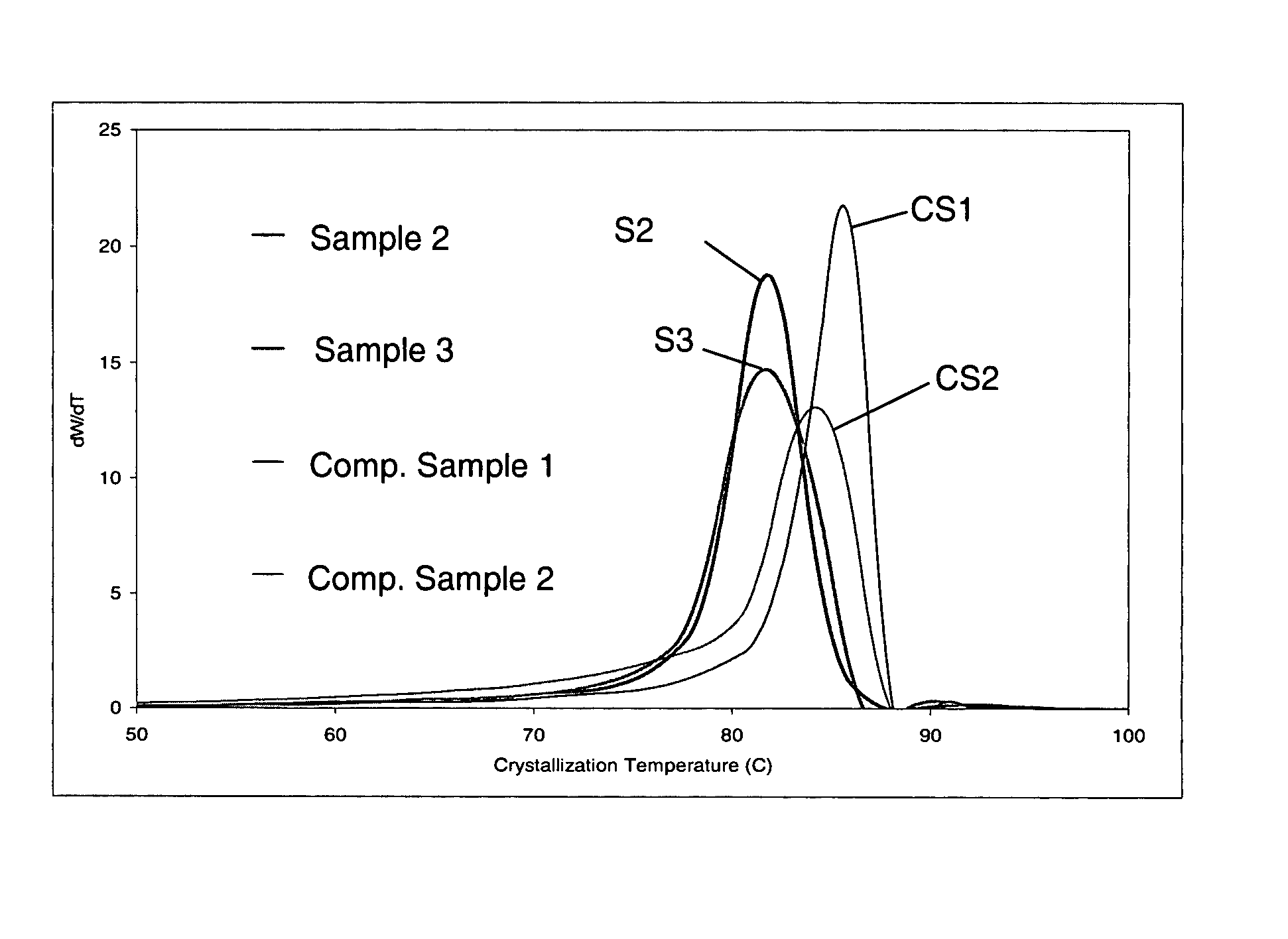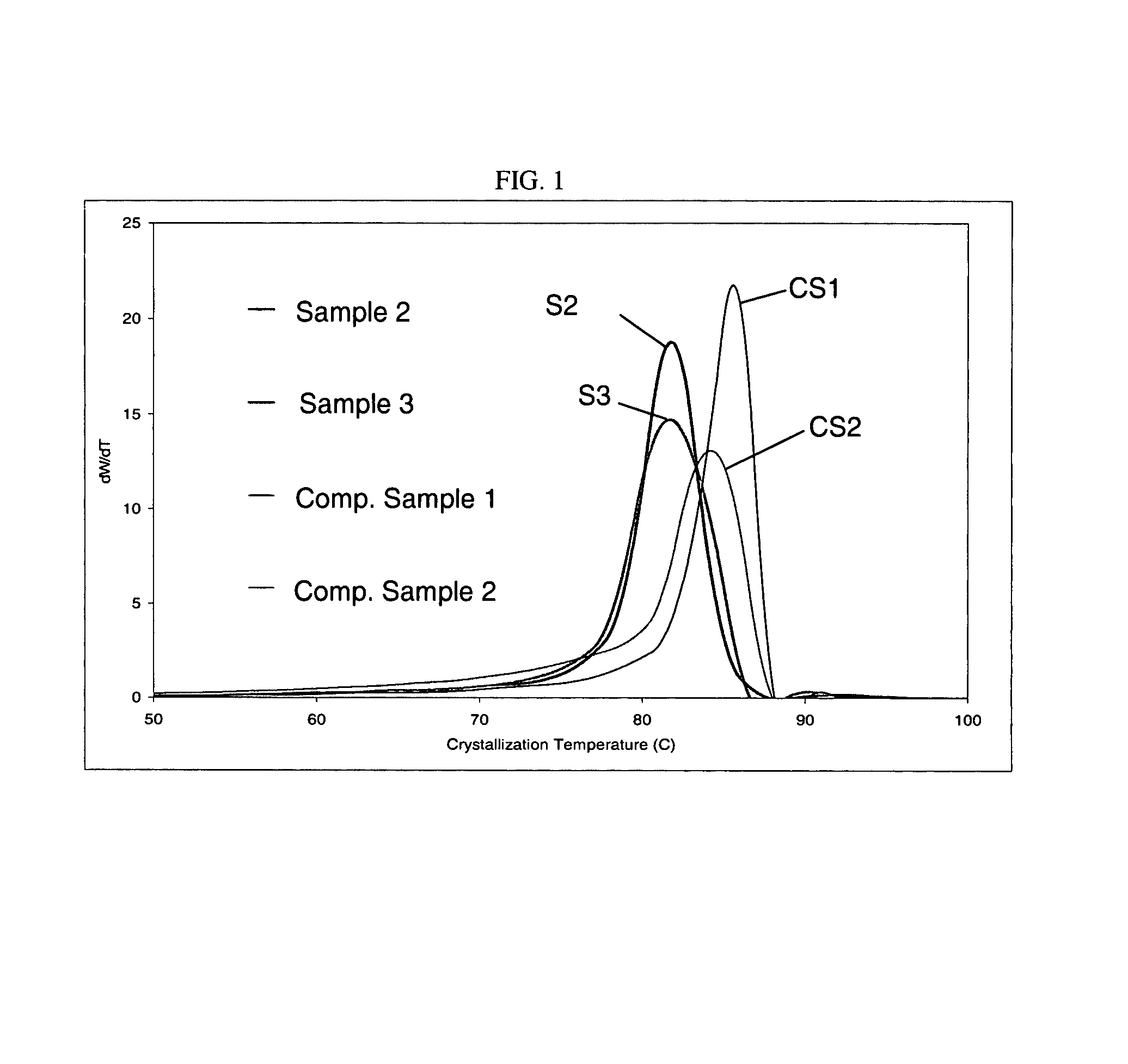Polymers made with metallocene catalysts, for use in rotomolding and injection molding products
a technology of metallocene catalysts and catalysts, applied in the field of polyolefin manufacturing, can solve the problems of reducing off-grade production and potentially eliminating costly procedures
- Summary
- Abstract
- Description
- Claims
- Application Information
AI Technical Summary
Benefits of technology
Problems solved by technology
Method used
Image
Examples
example 1
[0096]Three grades of various polyethylene resins used in rotomolding and injection molding applications were produced with a supported dimethyl bis(n-propylcyclopentadienyl)hafnium catalyst in a continuous polymerization reactor. The three grades had target Melt Indexes ranging from 1.5 to 80 dg / min and density targets ranging from 0.940 to 0.954 g / cc, with the resulting resins having properties as set forth in Table 1.
[0097]
TABLE 1Production Targets.MeltCatalystIndex (I2)DensitySampleTypeDg / ming / ccTargeted Application1Metallocene1.40.9445mHDPE; Rotomolding2Metallocene6.00.9404mMDPE; roto / injectionmolding3Metallocene80.60.9536mHDPE; injection moldingCS1Z-N6.70.9521HDPE; injection moldingCS2Z-N67.70.9530HDPE; injection molding
[0098]The production of the three grades using a single catalyst and catalyst support indicated that the catalyst system was suitable for the production of various density and melt index grades (blown, cast film, rotomolding, injection molding), where there is ...
PUM
| Property | Measurement | Unit |
|---|---|---|
| melt index I2 | aaaaa | aaaaa |
| peak temperature | aaaaa | aaaaa |
| peak temperature | aaaaa | aaaaa |
Abstract
Description
Claims
Application Information
 Login to View More
Login to View More - R&D
- Intellectual Property
- Life Sciences
- Materials
- Tech Scout
- Unparalleled Data Quality
- Higher Quality Content
- 60% Fewer Hallucinations
Browse by: Latest US Patents, China's latest patents, Technical Efficacy Thesaurus, Application Domain, Technology Topic, Popular Technical Reports.
© 2025 PatSnap. All rights reserved.Legal|Privacy policy|Modern Slavery Act Transparency Statement|Sitemap|About US| Contact US: help@patsnap.com


